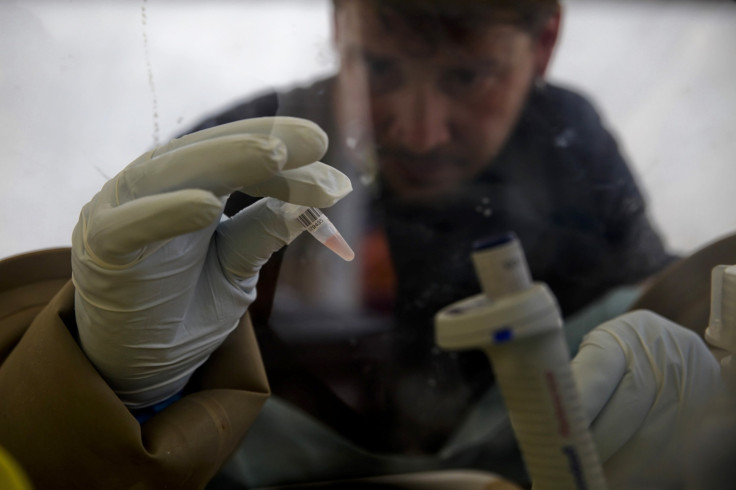Curing The Ebola Virus: New Drug Found To Be Effective In Rodents And Monkeys

Death rates for outbreaks of hemorrhagic fever, including Ebola, are tragically high — more than 90 percent of those infected die. Yet, no vaccine exists to prevent these terrifying illnesses, which even cause bleeding from the eyes. One important thing scientists know about hemorrhagic fevers is they are caused by filoviruses, an emerging family of pathogens. Now a team of researchers at the U.S. Army Medical Research Institute of Infectious Diseases discovered a small molecule drug that inhibits infection of filoviruses in human cells. Their scientific paper appears online in Nature.
The Lowdown on Viruses
Scientists believe viruses occupy the space between living beings and nonliving things. Viruses are so small — about a thousand times smaller than bacteria, which are much smaller than most human cells — that they can only be observed with an electron microscope. Under a microscope, some of these complicated particles look very simple, like round balls, while others have a complicated shape similar to a spider. Despite their tiny size, viruses contain a nucleic acid (a set of genetic instructions, either RNA or DNA), a protein coat, and a lipid membrane. Yet, unlike bacteria or human cells, viruses don’t contain all the enzymes they need to carry out the chemical reactions necessary for sustained life. For this reason, a virus must have a host cell where it can live and make more viruses. However, outside a host, viruses do not function.
For this new study of potential filovirus drugs, the team of scientists at USAMRIID began by exploring past medicinal products meant to treat filovirus diseases. Again and again, they saw how the different drugs, which proved to be effective in non-human primate models, were all based on designs that had limited potential to be used in living people. So they looked more closely at filoviruses and found that they use an "A," or adenosine, in their genomes. (Adenosine is one of the four base chemical components of DNA — the easy-to-remember “GATC” or Guanosine, Adenosine, Thymidine, and Cytidine.)
Understanding how filoviruses need adenosine to replicate, the scientific team developed a new molecule, BCX4430, which is a synthetic adenosine analogue — a chemical that resembles adenosine. Because it so closely resembles adenosine, BCX4430 is sometimes accidentally grabbed by a filovirus when it is trying to grow inside a living cell. Yet, unlike A, BCX4430 blocks growth and reproduction. To test their work, the scientists used rodents infected with Ebola virus and Marburg virus and then gave the mice and rats intramuscular injections of BCX4430. Seeing how effective BCX4430 was in preventing illness in rodents, the scientists moved up to macaques (a type of monkey).
Beginning one hour, 24 hours, or 48 hours post-infection, the team injected the monkeys twice a day with BCX4430 for a total of two weeks. What did they discover? The monkeys did not become sick with deadly disease. “This is the first report, to our knowledge, of non-human primate protection from filovirus disease by a synthetic drug-like small molecule,” the authors wrote in their paper. In time, they hope they may develop effective drugs to protect humans from hemorrhagic fevers.
Source: Warren TK, Wells J, Panchal RG, et al. Protection against filovirus diseases by a novel broad-spectrum nucleoside analogue BCX4430. Nature. 2014.
Published by Medicaldaily.com



























